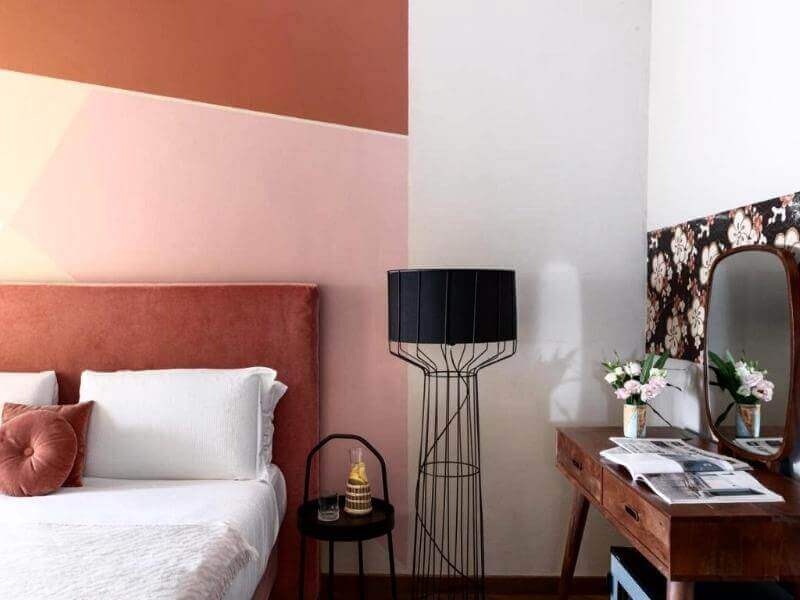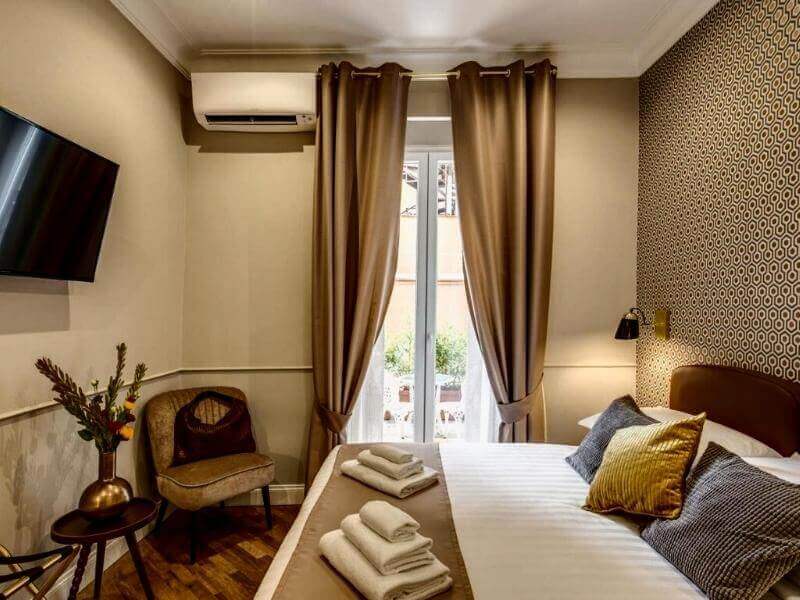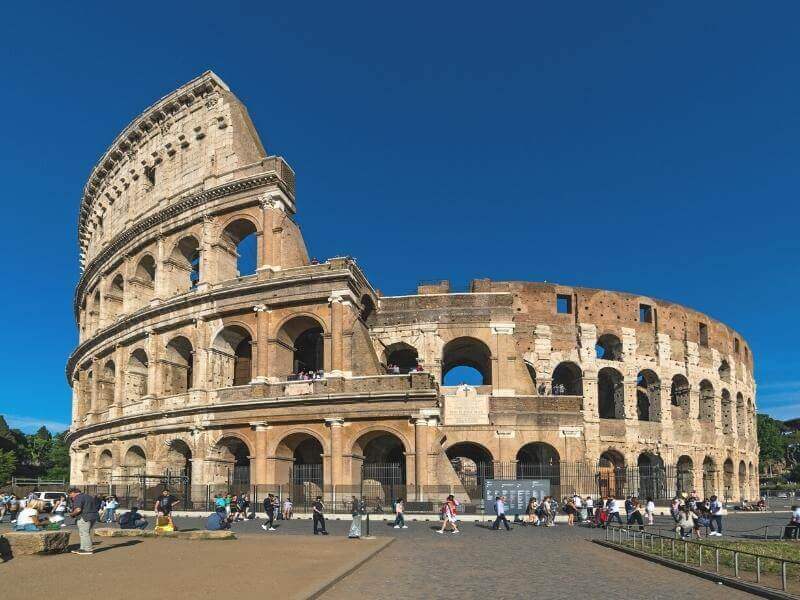Visit Palatine Hill: Tickets, Tours, Opening Hours & more Visitor Information
Home » Attractions » Palatine Hill
| DE

- - Updated on
The Palatine Hill is considered the birthplace of the Eternal City! Visiting this historical attraction is one of the best things to do in Rome. The Palatine is also one of the best-preserved ancient sites in the world!
According to the Roman historian Titus Livius, the cave where a shepherd raised the two siblings Romulus and Remus was located there.
According to legend, Romulus killed his brother Remus after disagreements and founded the city of Rome. However, it is assumed that the first people settled here as early as 1000 BC. The first settlements still consisted of the simplest huts.
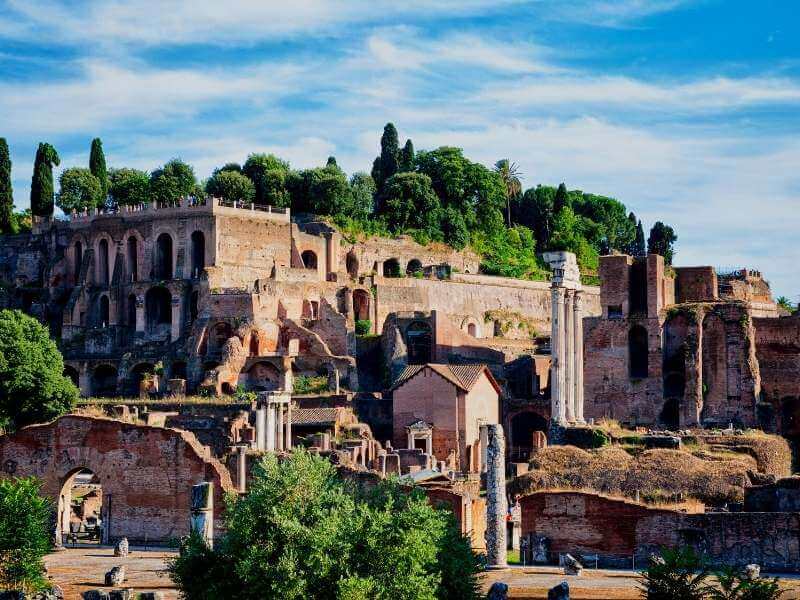
History of Palatine Hill: From the first settlements of Rome to magnificent imperial palaces
Throughout history, the centrally located Palatine Hill eventually developed into the imperial residence. The common Roman people were driven out of their dwellings, thus making room for the aristocracy.
Therefore, anyone who wanted access to the central hill of Rome in ancient Rome had to belong to an influential family. With the reign of Emperor Augustus, a whole series of magnificent temples and palaces were built, parts of which are still visible today.
Even if today only ruins of the imperial palaces remain, their visitors get impressive insights into the history of the Roman Empire. By the way, the word palace is derived from the Italian ‘palazzo,’ that is, from the Palatine!
Visitor Information:
Address:
Via Sacra, 00186 Roma
Transportation:
Metro stop: Colosseo, line B.
Bus stop: Colosseo, buses: 60, 75, 84, 85, 87, 117, 175, 186, 271, 571, 810, 850
Opening hours:
October 31st – February 28th: 09:00 am – 16:30 pm
March 1st – 26th: 09:30 am – 17:30 pm
March 27th – August 31st: 09:30 am – 19:15 pm
September 1st – 30th: 08:30 am – 19:00 pm
October 1st – 30th: 08:30 am – 18:30 pm
closed: January 1st & December 25th
Nearby:
Roman Forum (0,4 km)
Colosseum (0,4 km)
Circus Maximus (0,5 km)
Recommended exploration time:
1 hour
Tickets for Palatine Hill are always available only in combination with the Colosseum & Roman Forum.
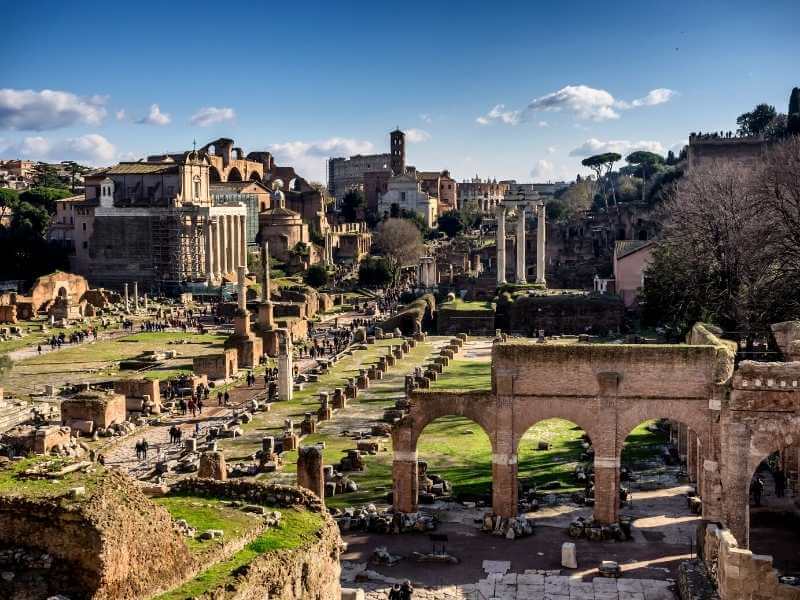
The Top 7 Sights on the Palatine Hill
Even today, countless ruins bear witness to the imposing lifestyle of the Roman nobility. Walk along the impressive ancient buildings, and you will get an exciting impression of the life of Roman society.
From here, you not only have a great view of the Roman Forum but also a variety of exciting sightseeing opportunities:
Domus Augusta - House of Augustus
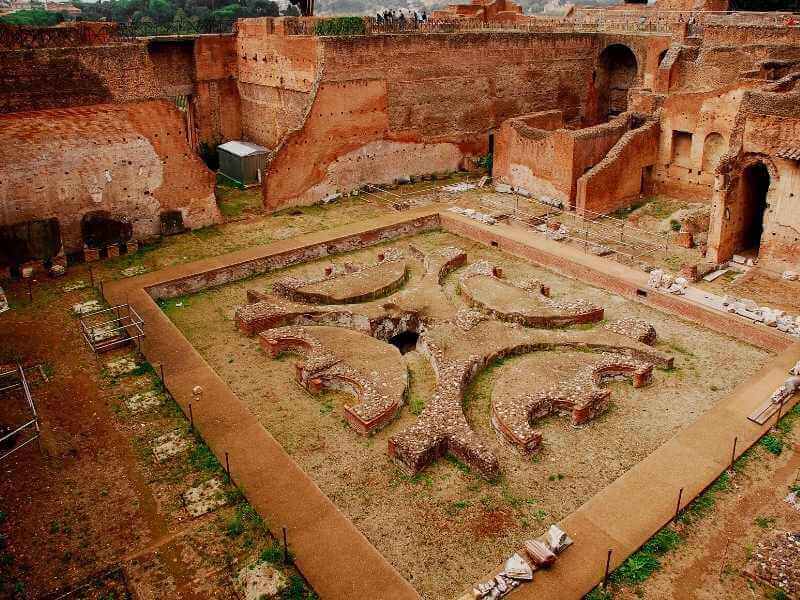
The most famous building on this hill is the House of Augustus, built by Augustus himself as a residence and later became the imperial palace.
It consists of two floors and still contains many valuable wall frescoes. In the photo, you can see parts of the courtyard.
The palace was built by Emperor Hadrian in the 2nd century A.D. The House of Augustus is located on the site of a former villa of Lucius Licinius Lucullus and his wife, Pompeia Plotina.
Domus Aurea - Nero's Golden House
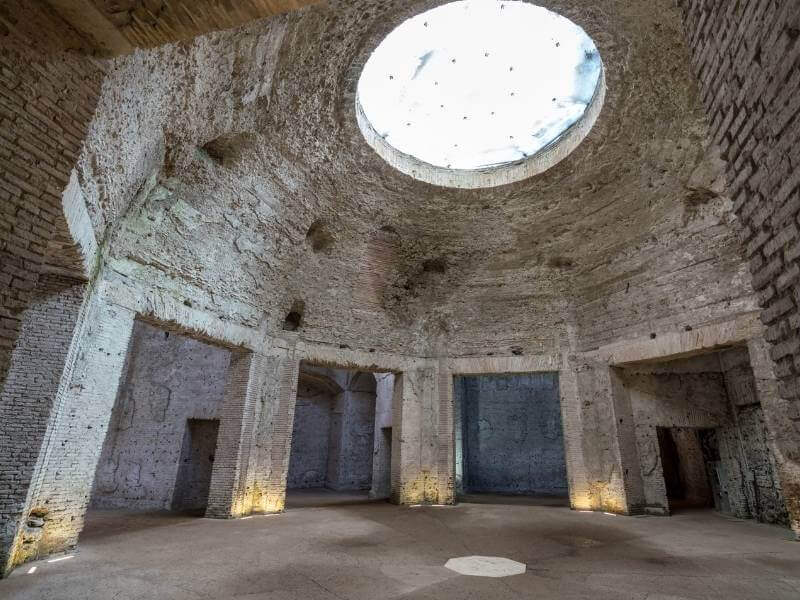
The Domus Aurea was once the palace of Emperor Nero, which he had built in the 1st century. His new imperial residence was to eclipse everything known to date.
Nero’s residence is also known as the Golden House because it was lavished with gold and precious stones. In addition to numerous pompous rooms, there were huge gardens with fountains and water features, gigantic statues, and plenty of extravagance.
The Domus Aurea caused widespread ridicule, malice, and unrest among the Roman people. Nero was highly unpopular as emperor!
The House of Livia Augusta
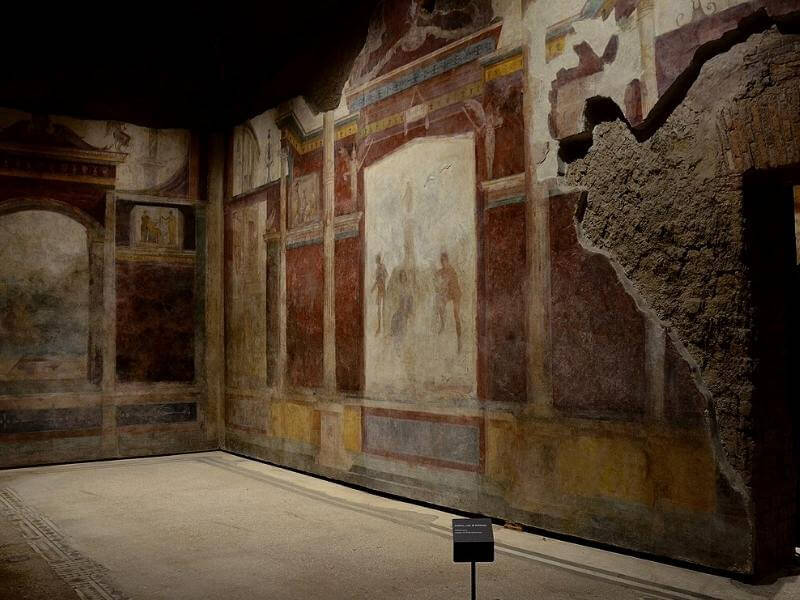
One of the best-preserved buildings on Palatine Hill is the house of Livia Augusta from the 1st century. Here, you can see great preserved wall and ceiling decorations.
It was built by Augustus and his wife Livia and was the first imperial palace on the Palatine Hill. The building had two floors: an atrium, a peristyle garden, and a nymphaeum.
The upper floor contained four rooms decorated with frescoes depicting scenes from mythology or allegories of virtues such as liberality (personified as a woman) or faith (displayed as a woman).
Domus Flavia
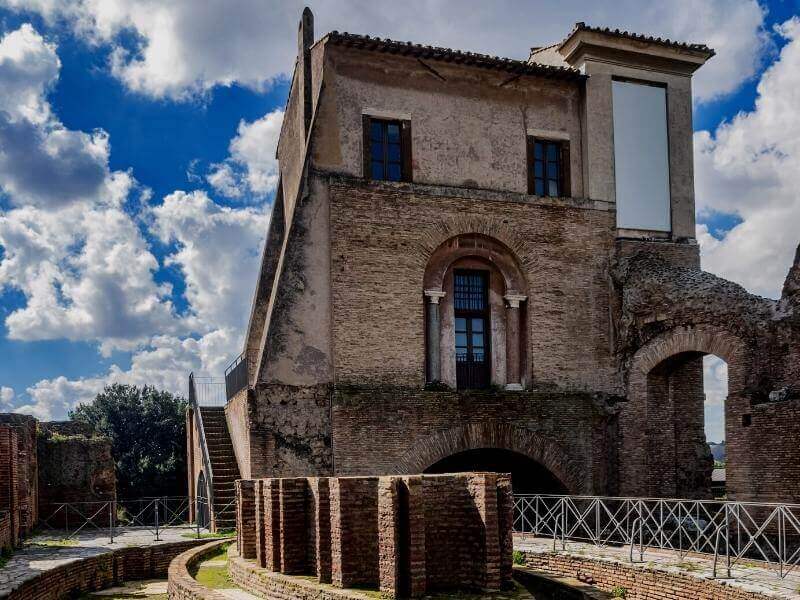
Emperor Domitian had this once magnificent palace built in 80 A.D. With his representative intentions, Domitian had the palace prepared extremely splendidly.
A terrace on the north side of the building served to show itself to the people. The Aula Regia (at that time richly decorated with marble) was the largest room, measuring 30 x 39 meters.
Until the 18th century, two giant statues decorated the entrance of the Domus Flavia. Some historically exciting parts of the former imperial palace can still be seen today.
The Farnese Gardens
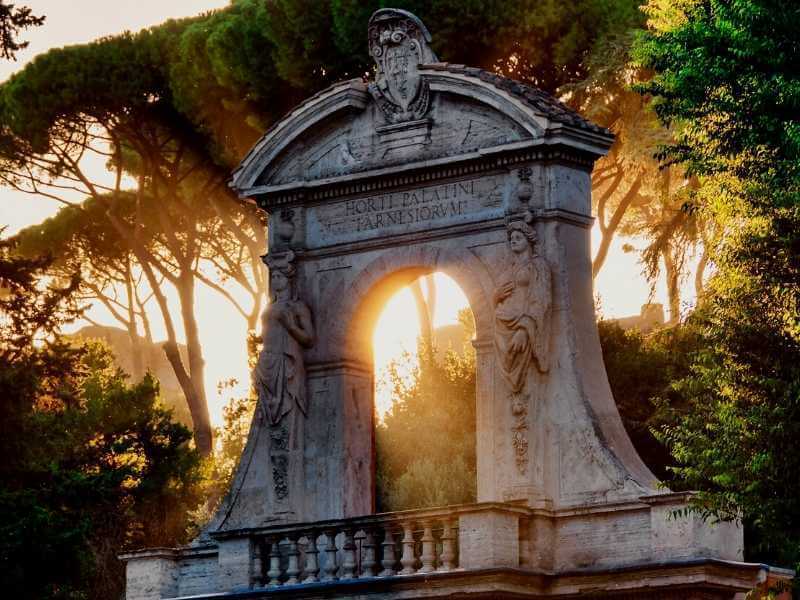
The Farnese Gardens were created during the 16th century on the northwestern part of the Palatine grounds. Today, they are among the first botanical gardens ever.
The gardens, created by the noble family “Farnese” and Pope Paul III, extended over several terraces and staircases, leading from the slopes of the north side to the top of the Palatine Hill.
Unfortunately, only a few ponds, fountains, and the recently renovated aviary pavilions remain today.
Domus Tiberiana - Emperor Nero's Cryptoporticus
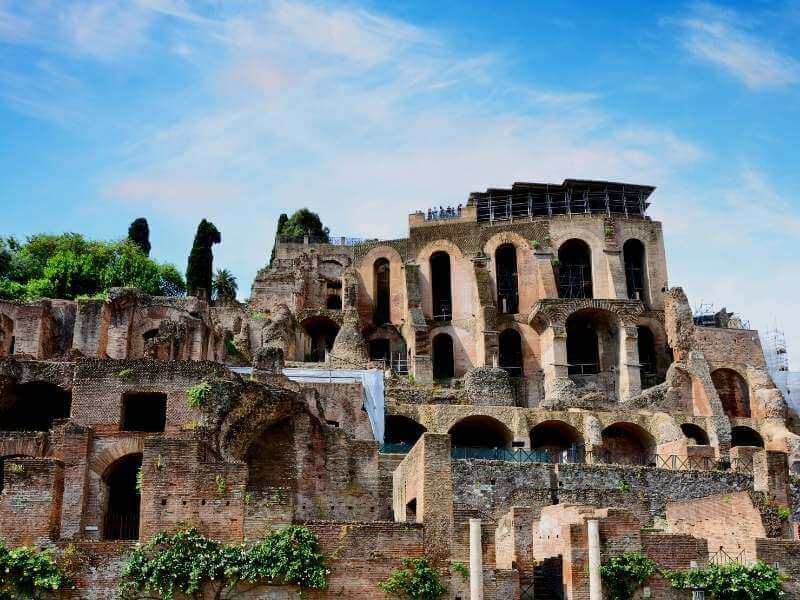
The Domus Tiberiana is a palace ruin that dates back to Emperor Tiberius. As another highlight, there is still a connecting tunnel between his residence and other buildings to discover.
This underground tunnel, ” Kryptoporticus,” was 130 meters long and probably built between 54 and 68 A.D. The elaborate tunnel mosaics and stucco decorations that covered the tunnel are still partially visible today.
Palatine Museum
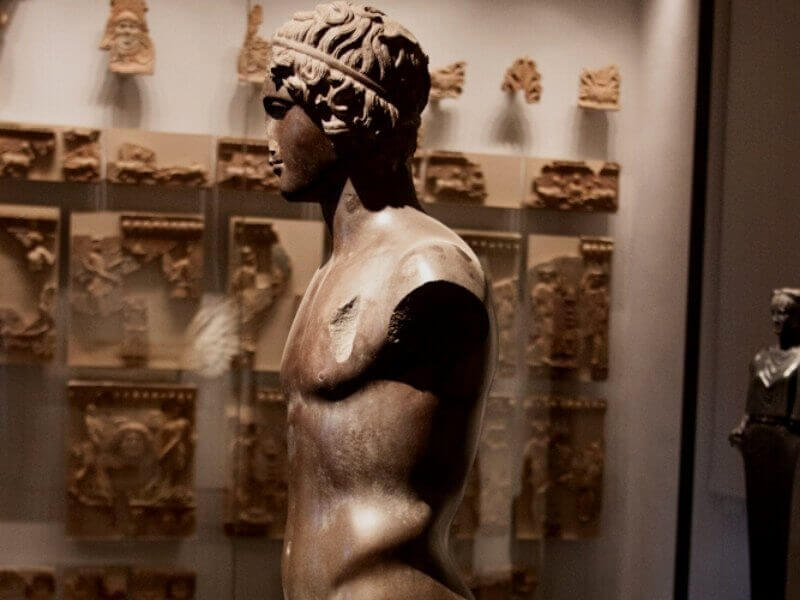
The Palatine Museum attracts its visitors with a state-of-the-art multimedia show. Recently renovated, tourists can see various decorative sculptures, mosaics, wall and ceiling frescoes, and many other ancient excavations.
The museum is manageable, so you should allow one hour here. The entrance to the museum is on Via di San Gregorio, 30.
From October to March, the Palatine Museum is open daily from 9:00 a.m. to 3:30 p.m. From April to September, visitors are allowed in from 9:00 a.m. to 6:30 p.m.
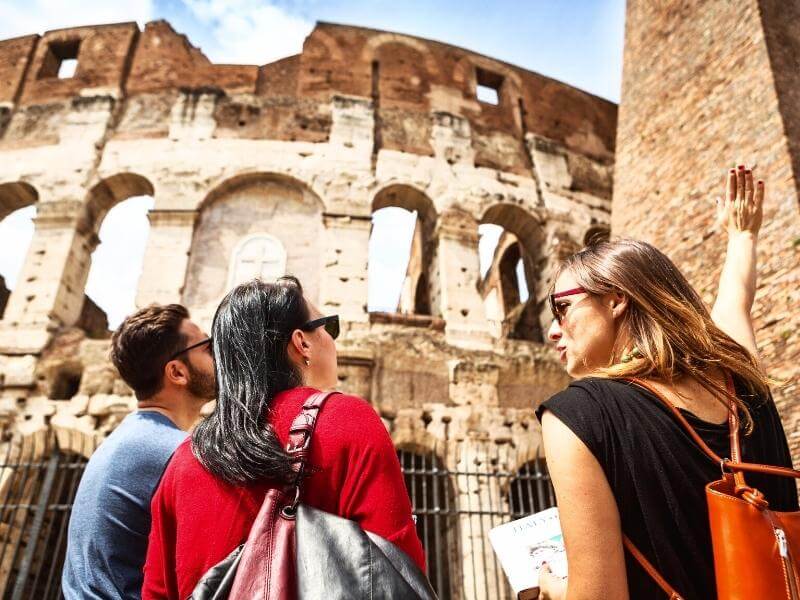
Our Hotel recommendations in the City Center of Rome:
Have you already found a suitable hotel?
We have researched the best hotels nearby! -> Hotels in Rome City Center
How to get to Palatine Hill in Rome?

Editor: Sebastian Erkens
Hey and welcome to Rome-Tourist! My name is Sebastian and I travel regularly to Rome, Italy.
On our Rome blog you will get valuable travel tips. If you have any questions about specific tours or sights, feel free to leave us a comment.
These articles may also interest you:
